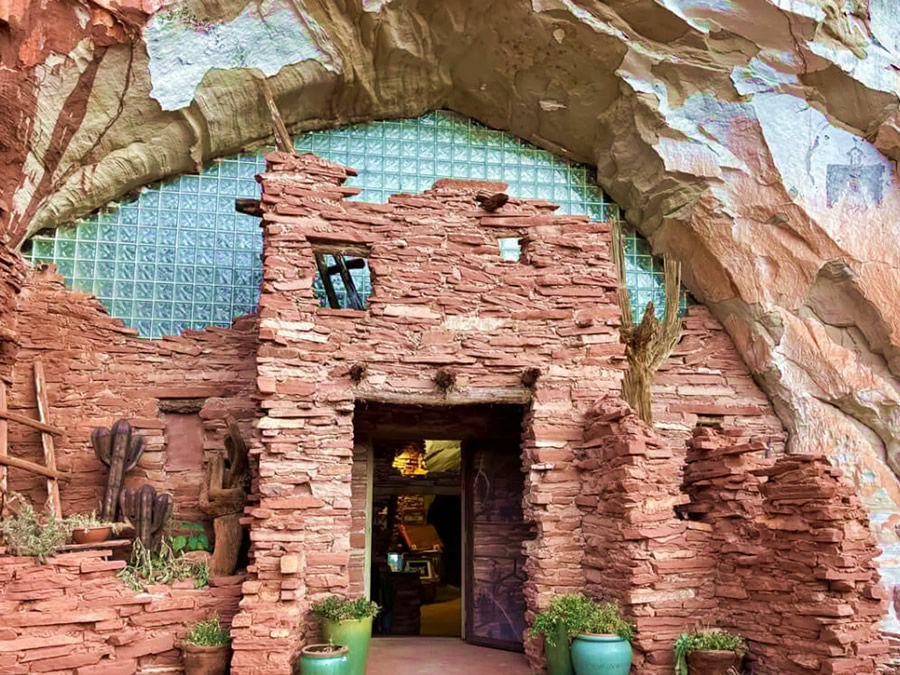From Phoenix all the way north to Salt Lake City XTRA
- hi david

- Aug 26
- 5 min read
Updated: Aug 28

In 2024, by chance, Mr. Lin of American friends and decided to embark on a magnificent nature tour. Starting in Phoenix, They drove north along Highway 17, first reaching the awe-inspiring South Rim and admiring the beauty of the Colorado River.
They embarked on a journey northward, enjoying both sightseeing and dining. Although Utah has five national parks, They couldn't explore them all, so they simply drove north along Highway 89, passing through Glen Canyon National Recreation Area and Zion National Park before finally arriving in Salt Lake City.

The Glen Canyon Dam
The first discussions of building a dam in the region started in the early part of the 1900s after the catastrophic and accidental flooding of the Salton Sea in California’s Imperial Valley after an engineering mishap with a Colorado River canal gate in 1904.
After the incident, a number of states signed a compact that set out to allocate the flow of the Colorado River and its water rights to various states. During the 1920s, there was a push to create a dam that could help control floods and store water for periods of extended drought.
In the aftermath of a number of studies in potential dam sites, the Bureau of Reclamation decided that the Black Canyon of the Colorado in Nevada was the more suitable location for a dam. As a result, the Hoover Dam was built, which formed Lake Mead.
Nevertheless, since the Hoover Dam only controlled the southern part of the river, some in the region thought there was still a need to control the river’s flow to the north. Thus, after the Bureau of Reclamation dropped a proposal to build the Echo Park dam to the north in Dinosaur National Monument, they chose to build a dam at Flaming Gorge in the 1950s and 1960s as well as a dam at the Glen Canyon during the same time.
These days, the dam itself is quite contentious as it has caused a number of major environmental issues. In particular, the muddiness of the Colorado River has caused the accumulation of an incredible amount of sediment within Lake Powell. Moreover, the heating of the water in Lake Powell due to the high ambient air temperature and the stagnant nature of the water has had grave consequences for native fish species.
Moreover, the dam has impacted the Colorado River downstream. In fact, the sheer amount of water that’s taken from the river at the dam means that the Colorado River no longer reaches its natural delta in the Gulf of California. These many environmental impacts have led to calls from major environmental groups to dismantle the dam and drain the lake, though these have not proved to be successful movements.

Although it’s best known for its rugged canyons, the recreation area does contain 68 named mountains, the highest of which is Navajo Point (7,382ft/2,250m), and the most prominent of which is Lands End (7,133ft/2,174m).

Let’s go! Continue to the next destination, Moqui Cave, passing through Zion National Park on the way.
This massive monolith sits just outside the northern boundary of Zion National Park. From inside the park, its other side is visible, with white bone stones towering above the red rock formations. The view is both majestic and imposing.

Zion National Park is located near Springdale, Utah, in the southwestern United States. The national park's main attraction, covering 229 square miles, is Zion Canyon, 15 miles long and half a mile deep. Zion National Park is renowned for its breathtaking hiking trails, particularly Angels Landing, the park's most famous, which has been voted one of the 10 Most Beautiful trails in the United States.

Visit the glow-in-the dark Moqui Cave Museum! There are also dinosaur tracks here....

The Moqui Cave Museum is a fun road side attraction in southern Utah. It catches your eye as you drive by because it features an old brick dwelling with white glass blocks embedded into the opening of a gigantic sandstone cave.
Located in southern Utah and about 5 miles north of Kanab, Moqui Cave is a museum of ancient history. It originally began as a natural sandstone cave and was eventually inhabited by Indigenous groups. They used the cave as a place for shelter and to store food.
In the 19th century, settlers used the cave as a speakeasy during the Prohibition period. Then in 1951, the cave was purchased by Garth and Laura Chamberlin. Garth wanted to created a popular tourist spot so he built a stage and tavern inside the cave creating southern Utah’s first dance hall.
Today, it’s filled with an eclectic mix of art work, artifacts, fluorescent minerals, rocks and dinosaur tracks. The exhibits include Garth’s personal collections from over the years and members of Chamberlin family still run the museum. You can visit the official website for more information.

Near the Moqui Cave Museum, you can also visit the Moqui Sand Cave (sometimes also called Moqui Cave). These two attractions are sometimes confused because their names are very similar and they are located very close to each other along Highway 89.
These caves were artificially created and were originally used to collect sand for glass production. They are located between Moqui Cave and Best Friends Animal Sanctuary.
Salt Lake City
The capital and largest city of Utah, U.S., is named for its proximity to the Great Salt Lake and is known for its tranquil environment and good public safety.
Today, we decided to have a Chinese meal, so we went to the New Golden Dragon Restaurant.

New Golden Dragon Restaurant
From authentic Cantonese dishes to classic American-Chinese favorites, New Golden Dragon’s experienced chefs and accommodating staff are happy to take special requests or customize menu options. With some of the best Dim Sum in the Valley,

Hill Aerospace Museum
With over 70 aircraft on display, and thousands of historical Air Force artifacts, Hill Aerospace Museum offers an incredible opportunity for discovery and excitement for the whole family! Founded in 1981, the museum is part of the United States Air Force Heritage Program and is supported by the Aerospace Heritage Foundation of Utah. Whether it’s seeing the first aircraft ever manufactured, the lumbering B-17, the speed-demon SR-71 or the one-and-only F-117 Stealth Fighter, Hill is a perfect location to unlock your inner child. With free admission for visitors, Hill Aerospace Museum is a great destination all year long.
You'll have the amazing opportunity to see more than 70 aircraft on display at the Hill Aerospace Museum. You will take a "Flight Through History" as you stroll through the three museum galleries and the outside air park.
The museum is open Tuesday through Saturday from 9:00 am - 4:00 pm.
FREE ADMISSION!




























Comments